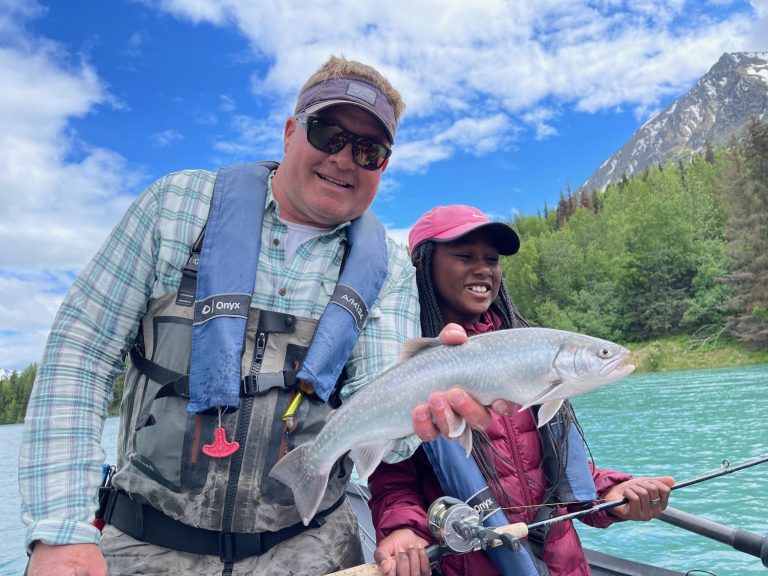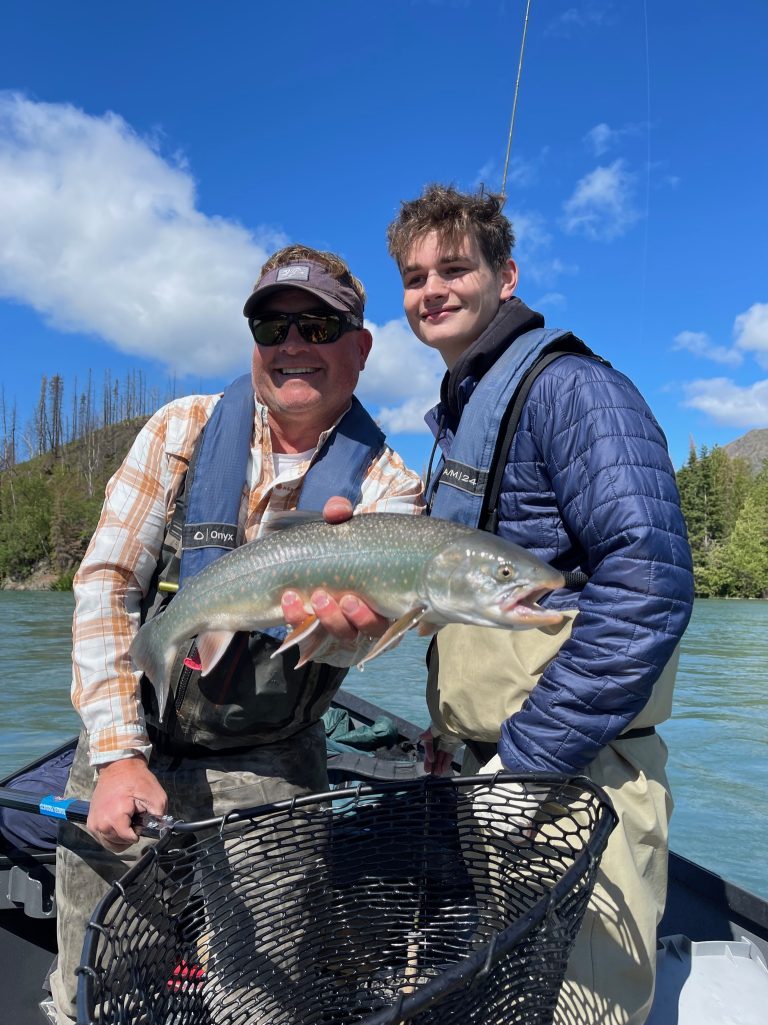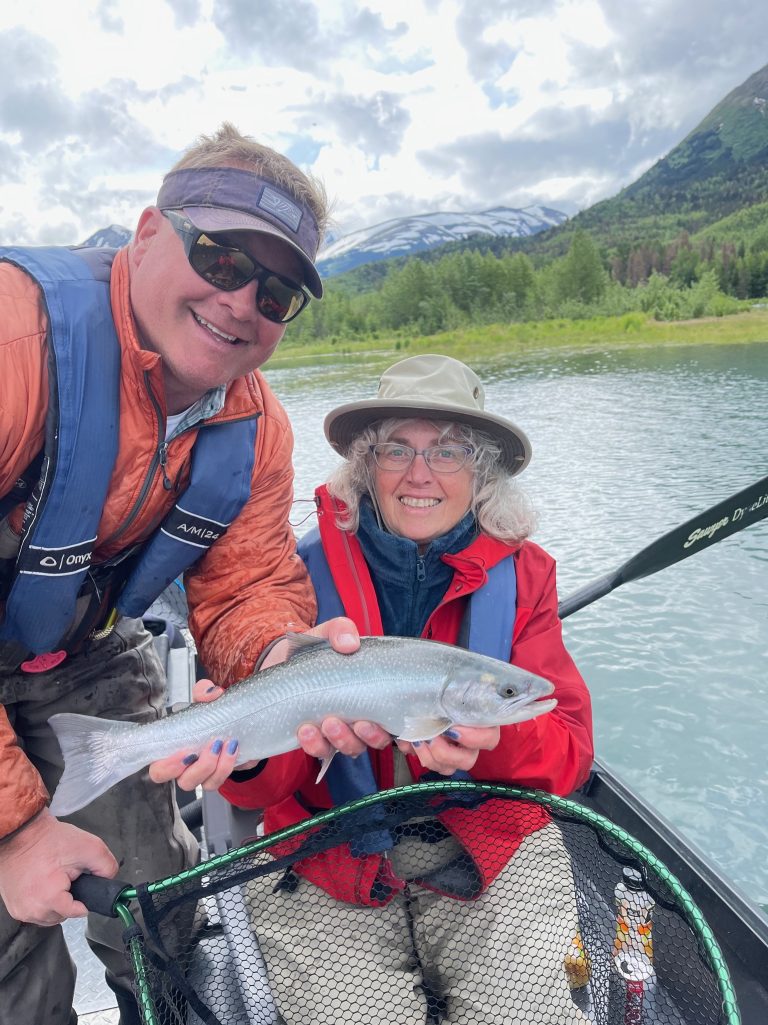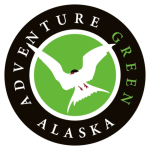Dolly Varden Char
Dolly Varden Char fishing in Cooper Landing
Dolly Varden Char are some of the most stunningly beautiful fish in Alaska. This gorgeous fish species was named after a young girl who was a character in the Charles Dickens novel “Barnuby Rudge” who was named Dolly and had a rosy complexion and wore a green fabric dress adorned with small crimson polka dots. The Dolly Varden are part of the char family that includes brook trout, lake trout, arctic char, and bull trout.
The Kenai River has an abundance of Dolly Varden char in its watershed. Dollies, as we like to call them, are both native fish that are born in the Kenai River watershed as well as anadromous fish that go out to sea to feed, then come back into the fresh water to feed and spawn.


Jason’s Guide Service catches Dollies all year long in the river and both Kenai and Skilak Lakes. The average size of the Dolly Varden vary on what section of river you are fishing and whether they have been in the river feeding or coming in from the lakes or ocean. The over all average for the Dolly’s would be 16-22 inches with fish being caught and released over 30 inches.
Dolly Varden are aggressive feeders and will put on weight all year round unlike some other species. You can fish Dollies with both fly fishing and spin fishing gear depending on the available forge and fishing conditions.
The Dollies will inhabit some of the same areas in the Kenai River as the rainbow trout, but are typically caught in certain areas that have the right features and biomass that provide an easy meal. The char in the Kenai follow a yearly feeding pattern depending on time of year and the different forage bases in the river at the time.
March and April on the Kenai River is when the majority of the char are in the lakes. The confluences of Kenai Lake and Skilak Lake is a congregating point where Dollies are looking to catch an easy meal of migrating salmon smolt going into the lakes where this forge spends the next one to three years maturing before they go out to the the ocean. It is in the ocean where the salmon will grow to maturity and eventually return to the Kenai River watershed to spawn.
The Kenai River closes it’s upper and middle stretches of the river on May 1st to protect the spawning rainbow trout and reopens June 11th. After the opener in June you can find the Dollies foraging along the gravel bars where the spawning trout have spent the last 30-50 days laying and protecting their eggs.
Dolly Varden char like any other species of salmonoid are aggressive feeders and will capitalize of any forage base in the river. Most of the eggs Dollies feed on whether it be rainbow eggs or salmon eggs are generally eggs that didn’t get fertilized and buried, but occasionally they will stage directly behind spawning fish and eat the fresh unfertilized eggs.
July and most of August is when there are countless transitions in the forage bases in the Kenai River that vary from smolt, bug hatches, sculpins, flesh from filleted salmon carcasses, and leeches, to name a few. This creates lots of options to catch Dollies.


You can watch huge schools of sea run Dolly Varden char swim upstream following the salmon on their migration to the spawning grounds. The Dollies will disperse to different feeding areas throughout the river feeding on anything they can eat until the salmon start to lay their eggs. The guides at Jason’s Guide Service are on the Kenai River every day and stay on top of the current river conditions and bite. The last ten days of August through October is when the sockeye salmon, king salmon, and silver salmon lay their eggs every year with the pink salmon coming into the river in abundance on even years to lay their eggs. When the salmon of the Kenai River start to lay their eggs the river turns into the best trophy Dolly Varden char and rainbow trout factory in the state of Alaska. The Dollies put on massive amounts of weight and prepare themselves for their spawning season that stretches from September through November on the Kenai River.
When the salmon spawn begins the Dolly Varden focus on the spawning beds until they become so full they can’t eat anymore. When the salmon spawn has been in full swing for a few weeks the bite can turn on and off depending on how glutted the char can be and then we transition back into a multi-faceted forage base again and incorporate more flies into our arsenal. Salmon die after they spawn and their flesh deteriorates and starts to create more food for the char, rainbow trout, sculpins, and salmon smolt. When this happens it changes daily on what we will be fishing to put the trophy char in the net.
Whether you are a fly fishermen or a spin fishermen Dolly Varden char offer you great opportunities for fishing. We fish the Dolly Varden char in the Kenai River in the months of March, April, June, July, August, September, and October, with great opportunities for Dollies on the Lakes ice fishing in January, February, March, and occasionally in early April. The Dolly Varden char are one of the most sought after species in Alaska because of there brilliant colors and aggressive nature. The Dollies are a hard fighting fish that usually hits your flies and lures hard then bulldogs you and makes deep long runs never giving up until you get them in the net.
The fact that you can catch native Dolly Varden char and sea run char in the Kenai River is another bonus to get two more species or sub species off your trophy bucket list.



